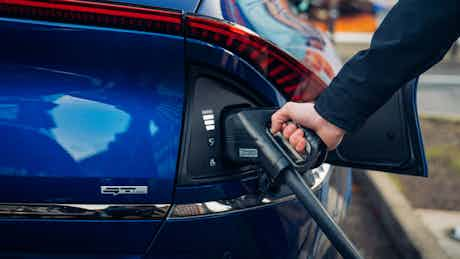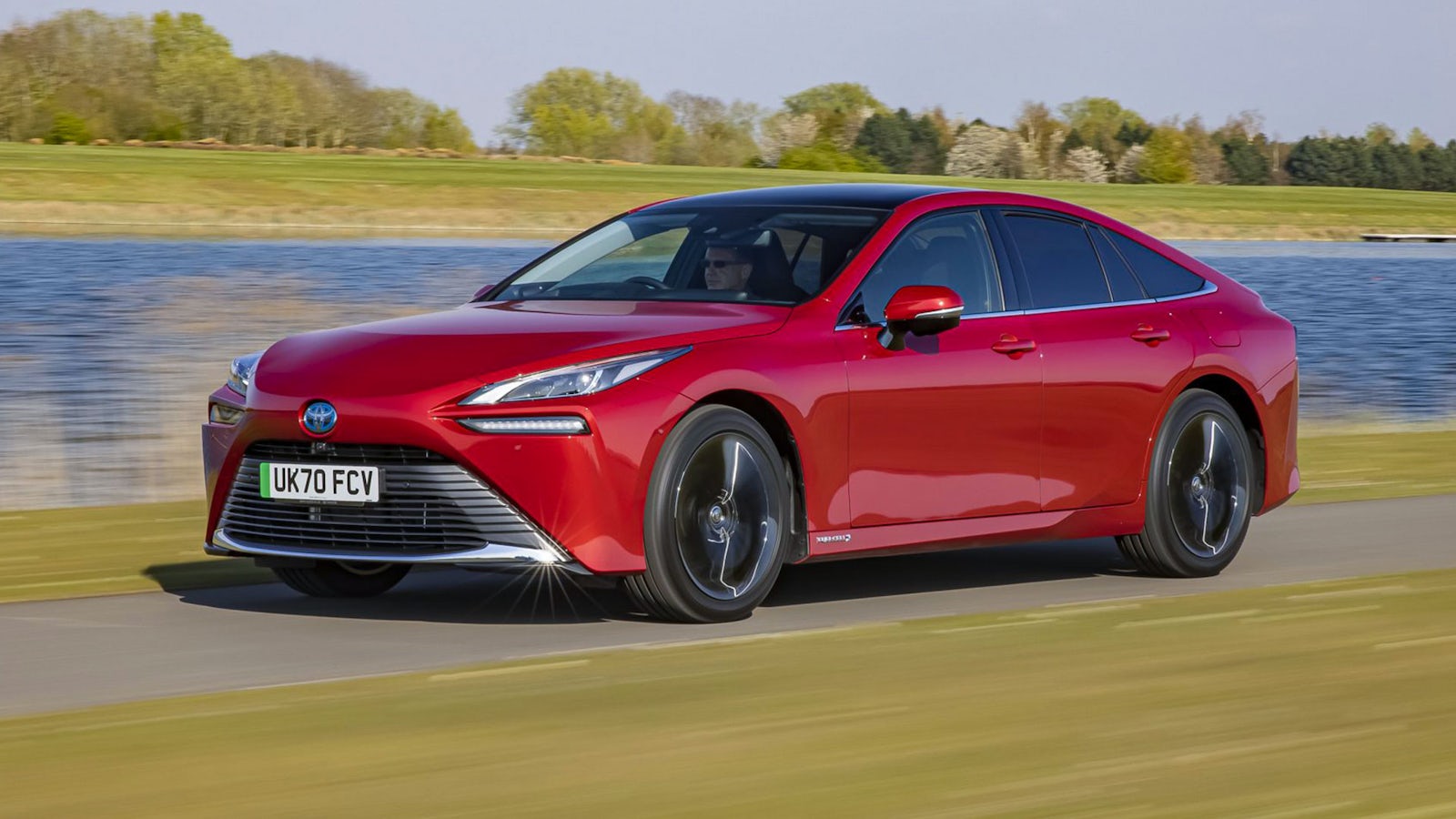Types of Electric Cars
June 08, 2022 by John Tallodi

Electrified cars come in a variety of different forms; our guide will help you tell your EVs from your HEVs and PHEVs
Electric cars are fast gaining in popularity, not least because of the looming ban on sales of new petrol and diesel cars (pushed back from 2030 to 2035). Electric cars in their strictest sense are powered purely by batteries, but there are a number of other types of car that come under the umbrella of ‘electrified’ vehicles.
In this article we will cover each variant in detail to make it easier when you are ready to switch to an electrified vehicle, which comprise:
- Pure electric vehicles (EV)
- Hybrid electric vehicles (HEV)
- Plug-in Hybrid vehicles (PHEV)
- Mild Hybrid Electric vehicles (MHEV)
- Range extender EVs (REx)
Electric Vehicle (EV)
An EV is simply an electric car with a large capacity battery and electric motors for propulsion. There is no petrol or diesel engine at all, and all power for the cars comes from the battery pack, which can be recharged either at home and work, or at public chargepoints. While electric vans, buses, scooters and lorries are all technically EVs, the term is used synonymously to mean electric cars.
The Tesla Model 3 is one of the most popular EVs on sale. Other popular EVs include the Kia EV6 and Volkswagen ID.3.

Benefits of EVs
- Electricity tends to be cheaper than petrol
- Easy to drive – no gears to change
- Good performance
- Maintenance costs can be low
Drawbacks of EVs
- Charging is slower and less convenient than filling a tank
- Prices tend to be higher than for conventional petrol/diesel cars
- Driving range on a full charge lags that of petrol/diesel cars
- Insurance can be expensive
Hybrid Electric Vehicle (HEV)
Hybrid electric vehicles have small electric motors, and batteries that recharge via regenerative braking and the internal combustion engine. HEVs, sometimes referred to as self-charging hybrids or simply hybrids, can travel for short distances (typically a mile or less) and at urban speeds in electric mode, with the engine coming into play under heavy acceleration or at higher speeds.
The Toyota Prius, Suzuki Ignis Hybrid and Kia Niro Hybrid are all popular HEVs. HEVs are well-priced and great for city driving, where you can realise impressive fuel consumption figures.

Benefits of HEVs
-
- Lower cost than PHEVs or EVs
- Generally lower fuel consumption than conventional petrol/diesel cars
- Electric components can power auxiliary devices and provide an acceleration boost
Drawbacks of HEVs
- Fuel economy benefits can vary based on driving conditions
- Very limited electric range on most models
- Tax benefits are minimal compared to pure EVs
Plug-in Hybrid Electric Vehicle (PHEV)
A Plug-in hybrid uses an internal combustion engine (petrol or diesel) combined with an electric motor and battery. A PHEV’s battery is smaller than an EV’s, but larger than a conventional hybrid’s, and PHEVs can typically cover between 20-70 miles in electric mode, and at speeds of around 70-80mph. Plus as well as being charged from the engine and using energy recouped from braking, a PHEV’s battery can be plugged in and recharged.
The Mercedes C 300e, BMW 330e and Volvo XC60 Recharge are all popular PHEVs on sale today. A PHEV is great for where you want to benefit from pure EV driving over short distances but may need to travel places where recharging is not always possible or convenient. Our in-depth guide to PHEVs has more details.

Benefits of PHEVs
- Not totally reliant on battery range and electric charging infrastructure
- Can drive predominantly on battery power if daily commute is short
- Can be cheaper than pure EVs
Drawbacks of PHEVs
- Added complexity can increase running costs
- Failing to charge the battery negates any economy benefits
- Cost more than a similar petrol/diesel car
Mild Hybrid Electric Vehicle (MHEV)
A MHEV is a conventional petrol or diesel car that utilises a very small electric motor and battery to provide additional power to the engine or auxiliary systems (air conditioner, power steering) when required. This can aid acceleration, while the 48-volt electrics that are typically present in a MHEV can allow the engine to shut down when the car is coasting, saving fuel. MHEVs should not be thought of in the same sense as conventional hybrids, but are best considered as traditional petrol or diesel cars with beefed up alternators.
The Ford Puma and Fiat 500 Mild Hybrid are two great little MHEVs available to buy right now, both provide an economy boost over conventional petrol-powered cars, especially in short stop-start driving situations.
Our in-depth guide to mild hybrids has more details.
Benefits of MHEVs
- Smoother stop/start function compared to conventional cars
- Help boost acceleration
- Lower fuel consumption than conventional cars
Drawbacks of MHEVs
- Can be slightly pricier than pure petrol/diesel equivalent
- No real tax benefit to be had
- Cannot drive in pure electric mode
Fuel Cell Electric Vehicle (FCEV)/hydrogen cars
A Fuel Cell Electric Vehicle (FCEV) uses hydrogen for fuel, converting it via fuel cells into electricity which in turn powers an electric motor. They only emit water vapour making them eco-friendly when in use, but the most common form of liquid hydrogen production generates significant CO2 emissions.
Currently there are just two FCEVs on the UK market, the Toyota Mirai and Hyundai Nexo. You have to apply to be considered eligible for leasing one of these, as hydrogen cars are still relatively new propositions, and there are an extremely limited number of hydrogen refuelling stations.

Benefits of hydrogen cars
- Decent range of around 400 miles
- Takes just 3-5 minutes to fill the hydrogen tank
- Refined and silent driving experience
Drawbacks of hydrogen cars
- Expensive to buy
- Costs more per mile than alternatives
- Very limited refilling infrastructure
Range extender electric vehicle (REx)
An range extender is essentially an electric car with a small petrol or diesel engine that can act as a generator to charge its batteries. A REx should be thought of as an electric car, and its batteries recharged with a similar approach, with the engine kicking in to increase range and reduce range anxiety as needed. The engine doesn’t directly power the wheels and is used when the batteries are low, and performance can be reduced in some circumstances.
The BMW i3 range extender (there is also a pure electric i3) was such a car, although it is no longer on sale. A range extender version of the Mazda MX-30 EV is also due for launch soon.

Benefits of E-REVs
- Drives exactly like any electric car
- Not dependent solely on electric charging infrastructure
- Range is longer than in equivalent electric vehicle
Drawbacks of E-REVs
- Added complexity of internal combustion engine
- Can be noisy when using petrol/diesel engine to charge batteries
- Tend to be pricier than comparable electric car
Buy your next car (and sell your old one) with carwow
Found the perfect electrified car for your needs? Then take a look at our electric car deals on your preferred model through carwow.
And if you want to test the EV waters before you take the plunge into ownership, we’ve got a great selection of lease deals on electric cars.
A network of trusted dealers will come to you with their best offers. There’s no need to haggle or negotiate and you can compare your offers in one place without even having to leave your home.
If you’re thinking of selling your old car, you can do that through carwow, too. Again, a network of dealers will come to you with their best offers for your vehicle — no haggling, no stress, and the price you’re offered is the price you’ll get. The dealership will make payment and collect your car.















